RE: Protonation Cation/Anion by mikewick77
Viewing a response to: @mikewick77/protonation-cation-anion
cation·@mikewick77·
0.000 HBD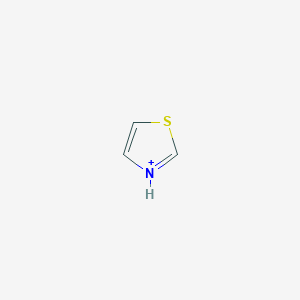 Thiazol 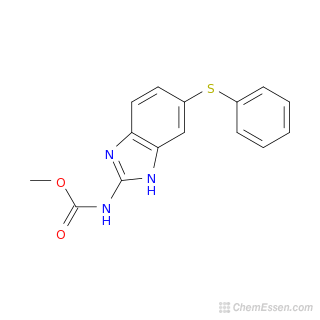 Fenbendazole 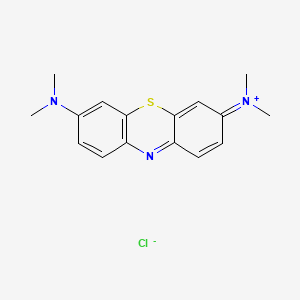 Methylene Blue 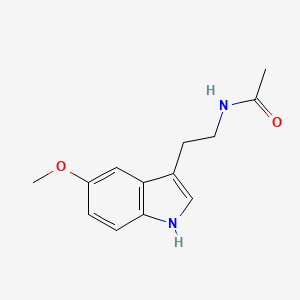 Melatonin  Thiamine (B1) 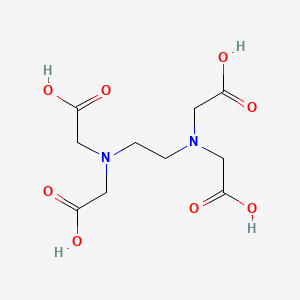 EDTA   Hydroxychloroquine Sulfate Thiamine Fenbendazole Methylene Blue Pyrimidine Thiazole Thiamine has a 6-Carbon & 5-carbon, smaller then a Benzene. Thiamine deficiency leads to reduced nitric oxide production Role of thiamine thiol form in nitric oxide metabolism Thiamine pyrophosphate a regulator of the nitric oxide https://youtu.be/O-aQHxp97oA?feature=shared https://www.eonutrition.co.uk/post/mega-dose-thiamine-beyond-addressing-deficiency https://www.hormonesmatter.com/thiamine-deficiency-causes-intracellular-potassium-wasting/ https://en.m.wikipedia.org/wiki/Thiaminase Serotonin Syndrome and Thiamine: Is There a Connection? https://www.hormonesmatter.com/serotonin-syndrome-thiamine-connection/ Why Thiamine Supplementation Requires Magnesium; Thiamine Activation Requires Magnesium https://www.hormonesmatter.com/why-thiamine-supplementation-requires-magnesium/ Thiamine Activation Requires Magnesium https://www.hormonesmatter.com/why-thiamine-supplementation-requires-magnesium/ Mega-Dose Thiamine: Beyond Addressing “Deficiency” https://www.eonutrition.co.uk/post/mega-dose-thiamine-beyond-addressing-deficiency Thiamin and protein folding Dr Lonsdale https://www.sciencedirect.com/science/article/abs/pii/S0306987719300829?via%3Dihub .. Thiamine plays a key role in intracellular glucose metabolism and it is thought that thiamine inhibits the effect of glucose and insulin on arterial smooth muscle cell proliferation. Thiamine plays an important role in helping the body convert carbohydrates and fat into energy. .. Prion = Resistant Starch Thiamine = Carbohydrate Metabolism Starch = Carbohydrate .. https://en.m.wikipedia.org/wiki/Thiazole https://en.m.wikipedia.org/wiki/Epothilone https://en.m.wikipedia.org/wiki/Sorangium_cellulosum Commercial significant thiazoles include mainly dyes and fungicides. Thifluzamide, Tricyclazole, and Thiabendazole are marketed for control of various agricultural pests. Another widely used thiazole derivative is the non-steroidal anti-inflammatory drug Meloxicam. The following anthroquinone dyes contain benzothiazole subunits: Algol Yellow 8, Algol Yellow GC, Indanthren Rubine B, Indanthren Blue CLG, Indanthren Blue CLB. These thiazole dye are used for dyeing cotton. The principal mechanism of the epothilone class is the inhibition of the microtubule function. Microtubules are essential to cell division, and epothilones, therefore, stop cells from properly dividing. Industrial fermentation and genetic manipulation of S. cellulosum is challenging. Plasmids have been found to not function in S. cellulosum cells. Reproducible genetic alterations must be made directly into the single circular chromosome. .. Indole Indolamine Tryptophan Tryptamine Hydroxycitrate Hypochlorous Acid (HOCl) Thiamine Glutathione Potassium Magnesium Amide Amine Thiamine Thia = Sulfur Mine = Nitrogen Transketolase Alpha-Ketoglutarate Dehydrogenase Pyruvate Dehydrogenase Corneal Keratocyte https://en.m.wikipedia.org/wiki/Indolamines https://en.m.wikipedia.org/wiki/Tryptophan https://en.m.wikipedia.org/wiki/Tryptamine https://en.m.wikipedia.org/wiki/Indole https://en.m.wikipedia.org/wiki/Aminoquinoline https://en.m.wikipedia.org/wiki/Amide https://en.m.wikipedia.org/wiki/Amine .. and B1 Thiamine does similar things as Methylene Blue. B1 Thiamine was originally discovered & synthesized from a dye. and it seems to help push out sodium from cells, and allow Potassium & Iron Hemoglobin back in. i think the goal for B1 is to open up blocked mitochondria as an enzyme activator, allowing vitamins & minerals to be most effective, so taken with a good multivitamin is important. Fenbendazole, Methylene Blue Melatonin.. all the most powerful compounds.. all look like Vitamin B1, or damn near close enough. i took handfuls of B1 with Vitamin-C, E & Fish oil, specially to focus on my joint collagen. i was fiddling around with Potassium, Sea Salt & Citric Acid, to get the ions sparked up, but something was missing, thats when i found out B1 puts Potassium inside the cell, where it is supposed to be for PH Buffer Homeostasis. Potassium was one of the few elements that has direct neutralizing effects on Prion, the other was Brass. DNA Parasite inside mitochondria, i think its metabolizing the iron, converting Heme into the toxic Oxide, and as a result displacing the Potassium. making an environment to produce self assembling prion amyloidosis. i dont want to fiddle too much with Copper & Zinc metals, because a pinch too much is overdose & death. so it has to be the Potassium, thats how i discovered the chronic deficiency, deposits around infected cells, and how to put it backninto the cells, via B1 as an enzyme activator. another thing, the literature says most B1 is water soluble & flushed out, requiring an ongoing high level treatments, but if taken with the other vitamins, i think its still doing things, even days after taking them, the Nitrogen & Sulfur is actually like Fenbendazole, meaning it has long lasting effects, possibly weeks of enzyme reactions. also, Prion actually uses copper in its misfolding process. [Structural Consequences of Copper Binding to the Prion Protein] .. found two papers comparing Amyloid with Protocell. Quantitative sensing of microviscosity in protocells and amyloid materials using fluorescence lifetime imaging of molecular rotors Steps Towards the Formation of A Protocell: The Possible Role of Short Peptides .. Glutathione is a tripeptide (cysteine, glycine, and glutamic acid) found in surprisingly high levels—5 millimolar—concentrations in most cells. This is the same concentration in cells as glucose, potassium, and cholesterol Amides undergo many chemical reactions, although they are less reactive than esters. Amides hydrolyse in hot alkali as well as in strong acidic conditions. Acidic conditions yield the carboxylic acid and the ammonium ion while basic hydrolysis yield the carboxylate ion and ammonia. .. Resistant Starch Retrogradation https://en.m.wikipedia.org/wiki/Resistant_starch glucose chains can reassociate into short crystalline structures, which typically involves rapid recrystallization of amylose molecules followed by a slow recrystallization of amylopectin molecules in a process called retrogradation. .. Metazoa Bryozoa Micrometazoa Tardigrade Evolutionary genomics in Metazoa: the mitochondrial DNA as a model system https://www.sciencedirect.com/science/article/abs/pii/S037811199900270X?via%3Dihub The rhizome of life: what about metazoa? https://www.ncbi.nlm.nih.gov/pmc/articles/PMC3417402/ Thiamine (B1) Pyrimidine Thiazole Thiophene Thienyl Thiazolyl Thiazole Thiamine The structure of the infectious prion protein https://www.ncbi.nlm.nih.gov/pmc/articles/PMC7030906/ The prion protein binds thiamine https://febs.onlinelibrary.wiley.com/doi/10.1111/j.1742-4658.2011.08304.x Oligomeric-Induced Activity by Thienyl Pyrimidine Compounds Traps Prion Infectivity https://www.jneurosci.org/content/31/42/14882 An Overview of the Synthesis and Antimicrobial, Antiprotozoal, and Antitumor Activity of Thiazole and Bisthiazole Derivatives https://www.ncbi.nlm.nih.gov/pmc/articles/PMC7865802/ Thiazole: A Versatile Standalone Moiety Contributing to the Development of Various Drugs and Biologically Active Agents https://www.ncbi.nlm.nih.gov/pmc/articles/PMC9268695/ Chemical and genetic validation of thiamine utilization as an antimalarial drug target https://www.nature.com/articles/ncomms3060 Syntheses of Thiophene and Thiazole-Based Building Blocks and Their Utilization in the Syntheses of A-D-A Type Organic Semiconducting Materials with Dithienosilolo Central Unit https://pubs.acs.org/doi/10.1021/acsomega.2c02195 The importance of thiamine (vitamin B1) in humans https://www.ncbi.nlm.nih.gov/pmc/articles/PMC10568373/ .. 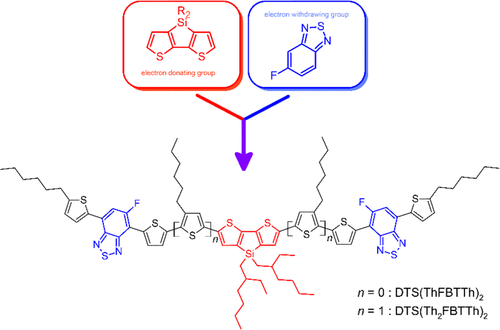 .. apparently only Nitrogen, Sulfur, Carbon, Oxygen & Hydrogen are capable og going 5-Carbon, small enough to wrech havoc on nano microbes. .. Self Assembling Nanoplastics Nanocrystal liquid Crystal Chitin Nanocrystals (CNCs) Colloidal Particles Superlattices The structure and dynamics of chitin nanofibrils in an aqueous environment revealed by molecular dynamics simulations https://pubs.rsc.org/en/content/articlelanding/2016/ra/c6ra00107f Microbial degradation of chitin (Enzymes, Steps, Mechanisms) https://microbenotes.com/microbial-degradation-of-chitin/ .. Mononegavirus Filoviridae Promoter (genetics) Holoenzyme Members that cause human disease in Mononegavirales order include Ebola virus, human respiratory syncytial virus, measles virus, mumps virus, Nipah virus, and rabies virus. Mononegavirus RdRps bind to a single promoter located at the 3' end of the genome. RNA polymerase holoenzyme shows high affinity to non-specific sites of the DNA, this characteristic does not allow us to clarify the process of promoter location. Thiamine pyrophosphate and protein structure of transketolase. .. Thiamine deficiency (beriberi) is common in some parts of southeast Asia. Acute thiamine deficiency can mimic many complications of malaria, such as encephalopathy and lactic acidosis.
👍